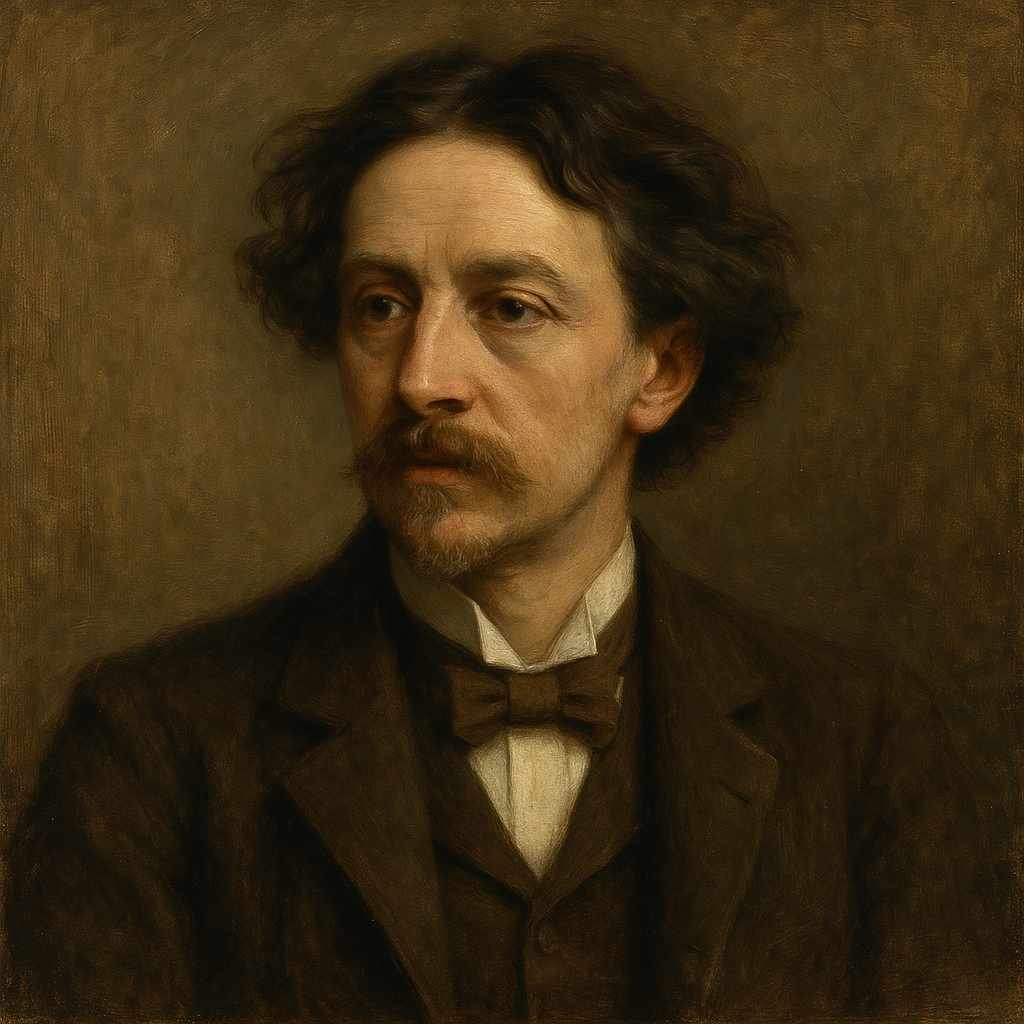1 Poems by Richard Le Gallienne
1866 - 1947
Richard Le Gallienne Biography
Richard Le Gallienne, a figure of considerable intrigue in the late Victorian and Edwardian literary scenes, was born on January 20, 1866, in Liverpool, England. His life and work would come to embody the aesthetic and decadent movements of the fin de siècle, though his legacy would extend far beyond these initial associations.
Born as Richard Thomas Gallienne to a middle-class family, he later adopted the more distinguished-sounding "Le Gallienne" as his nom de plume. His father, John Gallienne, was a successful accountant, while his mother, Jane Smith, instilled in him a love for literature from an early age. This early exposure to the written word would prove formative, setting young Richard on a path that would define his entire life.
Le Gallienne's formal education was relatively brief. He attended Liverpool College but left at the age of sixteen to work as a clerk in a local accountant's office. However, his passion for literature never waned, and he spent his free time devouring books and honing his writing skills. This period of self-education would later inform his unique literary voice, blending classical influences with a modern sensibility.
In 1887, at the age of twenty-one, Le Gallienne made a bold move that would alter the course of his life. He relocated to London, the epicenter of the literary world at the time. There, he quickly immersed himself in the vibrant artistic circles of the city. It was during this period that he became acquainted with Oscar Wilde, whose wit and aesthetic philosophy would leave an indelible mark on the young poet.
Le Gallienne's first collection of poetry, "My Ladies' Sonnets," was published in 1887, marking the beginning of a prolific literary career. While this early work received modest attention, it was his 1892 publication, "English Poems," that truly announced his arrival on the literary scene. The collection showcased his lyrical prowess and his ability to blend romantic sentiments with a distinctly modern voice.
Throughout the 1890s, Le Gallienne became a central figure in the aesthetic movement. He was known for his flamboyant dress, his flowing hair, and his penchant for green carnations – a symbol associated with Oscar Wilde and his circle. This period saw the publication of some of his most notable works, including "The Book Bills of Narcissus" (1891), a semi-autobiographical novel that captured the spirit of the age, and "The Quest of the Golden Girl" (1896), a whimsical romance that became his most popular work.
Le Gallienne's literary output was not limited to poetry and fiction. He was also a prolific critic and essayist, contributing regularly to publications such as The Yellow Book, The Star, and The Daily Chronicle. His critical work was characterized by a lyrical style and a deep appreciation for both classical and contemporary literature. His essay collections, such as "Retrospective Reviews" (1896) and "The Romantic '90s" (1925), provide valuable insights into the literary landscape of the era.
In 1897, Le Gallienne's personal life took a tragic turn with the death of his first wife, Mildred Lee, shortly after the birth of their daughter, Hesper. This loss deeply affected the poet and is reflected in the more somber tones of his subsequent work. He would marry twice more: to Julie Nørregaard in 1897 (they divorced in 1903) and to Irene Gurney in 1911.
The turn of the century marked a shift in Le Gallienne's fortunes. As the aesthetic movement waned and new literary trends emerged, he found himself somewhat out of step with the changing times. In 1903, seeking a fresh start, he moved to the United States. This transatlantic relocation would begin a new chapter in his life and work.
In America, Le Gallienne continued to write prolifically, though his style evolved to meet the tastes of a new audience. He became a popular lecturer and contributed to numerous American publications. His work from this period includes "October Vagabonds" (1910), a travelogue of his experiences in rural America, and "The Joys of Being a Woman and Other Papers" (1917), a collection of essays that showcased his wit and observational skills.
Despite his success in America, Le Gallienne maintained strong ties to his British roots. He frequently traveled between the two countries and continued to engage with European literary circles. This transatlantic identity is reflected in works like "The Romance of Zion Chapel" (1898) and "The Worshipper of the Image" (1900), which blend elements of both cultures.
As he aged, Le Gallienne's work took on a more reflective tone. His later poetry collections, such as "The Lonely Dancer" (1913) and "The Silk-Hat Soldier" (1915), reveal a mature voice grappling with themes of love, loss, and the passage of time. His autobiographical works, including "The Romantic '90s" (1925) and "From a Paris Garret" (1936), offer valuable firsthand accounts of the literary and cultural milieus he inhabited.
Throughout his career, Le Gallienne's work was characterized by its lyricism, its romantic sensibility, and its ability to capture the spirit of an age. While he is often associated with the decadent movement, his oeuvre defies easy categorization. He was equally adept at crafting delicate love sonnets, penning whimsical prose, and offering incisive literary criticism.
Le Gallienne's influence extended beyond his own writing. He was a mentor to younger poets and a tireless promoter of literature. His translations, particularly his rendition of Omar Khayyám's "Rubáiyát," introduced new audiences to classic works. He also played a crucial role in preserving the legacies of his contemporaries, writing biographical works on figures such as George Meredith and Rudyard Kipling.
In his later years, Le Gallienne settled in Menton, France, where he continued to write and entertain visitors from the literary world. He passed away on September 15, 1947, leaving behind a vast body of work that spans genres and continents.
Richard Le Gallienne's legacy is complex and multifaceted. While he may not have achieved the lasting fame of some of his contemporaries, his work provides a unique window into a pivotal period in literary history. His ability to adapt to changing literary trends while maintaining his distinctive voice is a testament to his skill and versatility as a writer.
For scholars and enthusiasts of late Victorian and Edwardian literature, Le Gallienne remains a figure of enduring interest. His work offers not only aesthetic pleasures but also valuable insights into the cultural and social dynamics of his time. As a bridge between the romantic traditions of the 19th century and the modernist innovations of the 20th, Richard Le Gallienne occupies a unique place in the pantheon of English literature, inviting continued exploration and appreciation.
This text was generated by AI and is for reference only. Learn more
Username Information
No username is open
Everything is free to use, but donations are always appreciated.
Quick Links
© 2024-2025 R.I.Chalmers (V2Melody).

All music on this site by R.I.Chalmers (V2Melody) is licensed under a Creative Commons Attribution-NonCommercial 4.0 International License.
Attribution Requirement:
When using this music, you must give appropriate credit by including the following statement (or equivalent) wherever the music is used or credited:
"Music by R.I.Chalmers (V2Melody) – https://v2melody.com"
Support My Work:
If you enjoy this music and would like to support future creations, your thanks are always welcome but never required.
Thanks!


